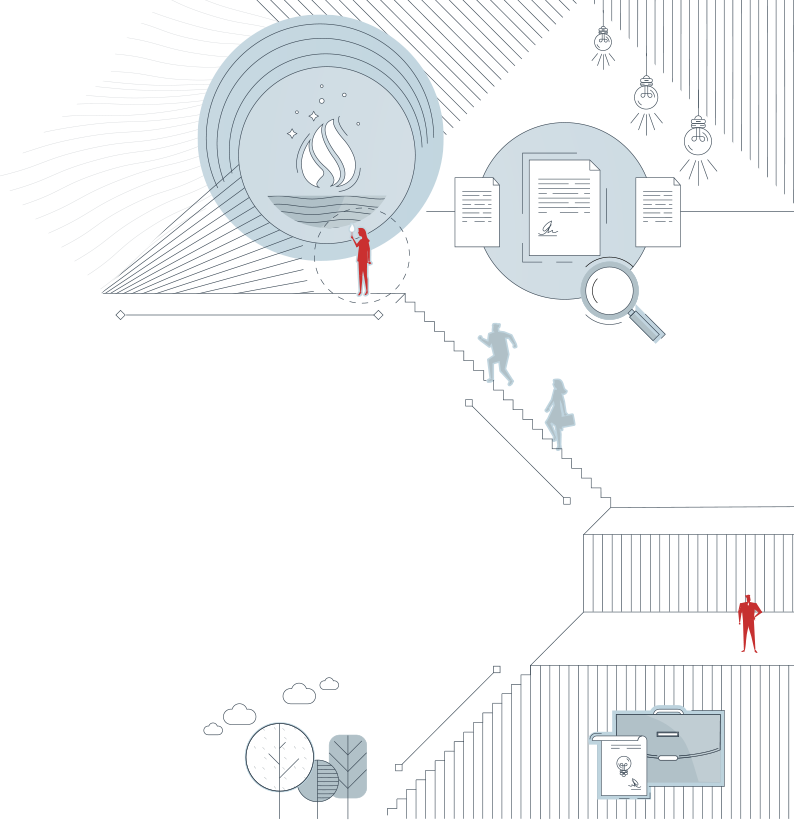Staying Ahead of Disruptive Business Models
Executives in a growing number of industry spaces are beginning to ask many 'What if?' sorts of question.
Their teams are modeling revenue projections, supply chains and technology risks against a bevy of influences brought on by new technology and new business competitors whose aims are as disruptive as they are ambitious.
Take the case of Amazon.com, which has over the past couple decades gone from asking whether any of us had bought a single book online to exploring more and more industry markets ripe for innovation, disruption or outright reinvention. It's just one of a number of large global companies whose future growth may rest on its ability to bring change to the customers your organisation may have served for decades.
This "Amazon effect" threatens to redraw long established lines in the sand between bricks-and-mortar competitors in numerous segments of the increasingly global, interconnected digital economy.
Also, consider, for just a moment, how the backers and innovators around Bitcoin and Etherium are working to disrupt global financial transactions and the very concept of currency as we have known it all of our lives. The truth is when innovators see weakness, they seek to exploit it to their advantage.
So what do these disruptive forces mean for your executive career, and your company today?
The immediate calling is to learn how the most innovative of today's companies are trying to change the game and where they are putting their focus, and why. It likely is not enough to keep tabs on how your own industry is changing.
More and more, the onus on global executives is to understand who the players are, the forces they are bringing to bear on traditional business models and the effect they are having in terms of customer engagement. If you're regularly reading The Wall Street Journal, that's one thing. But the kind of change you may need to learn more about may likely require perusing more than the traditional business media.
Just ask people in your own network. Ask some of your own up-and-coming colleagues. Maybe even ask your company's next generation leaders, including some millennial-aged workers. Chances are you're going to hear more and more about Blockchain, a decentralised ledger to secure online transactions.
Getting to know as much as you can about how companies and economies are shifting - while remaining focused on your executive day job - will likely provide you an advantage when new innovators come knocking on your door or perhaps when one of your own employees puts forth an intriguing business idea.
The deeper you can go on market's potential disruptors, the more you can identify key market adjacencies and white space, and the more you can remain open-minded about potential competitors, the better prepared you will be to adjust to new threats and seize on new business opportunities.
"Get ready for change" isn't just another corporate adage. It may be a prescription for insulating you and your organisation from the disruption that may lie ahead.
Copyright © TRANSEARCH International
Other Thought Leadership
Organizational culture is more than a buzzword—it’s a competitive advantage. Our Q4 2024 Leadership Perspectives on Organizational Culture Survey reveals how global leaders are shaping high-performance cultures to drive success. Explore the latest insights, from agility and talent retention to measuring what truly matters.
Culture isn’t what we think it is—it’s a system that either drives success or holds organizations back. Yet, only one in five companies manage it effectively. In this Talent Talks podcast, John O. Burdett, Leadership Advisor to TRANSEARCH International, shares why leaders must take a structured approach to culture—and how to turn it into a real competitive advantage.
TRANSEARCH hosted various c-suite executives in 2022 to discuss challenges like high energy costs and supply chain disruptions. The results revealed six key levers for companies to survive these challenges: People, Culture, Leadership, Reputation, Resilience, and Proactive, Empathic Communication. The study will continue in the 3rd quarter of 2023.
Dr. Carlos Davidovich MD. explores the neuroscience of biases and where they are located in our brain, the negative consequences of unconscious cognitive biases and the connection between biases and Diversity and Inclusion.
Ponder long enough and you might recall hearing at a business conference or reading a blog post from a renowned futurist, author or social commentator some time ago that while things to come remained as always unpredictable, it was likely that the pace of change in our times would indeed accelerate. Looking around at the ways our lives and work have been altered in the past 24 months alone,
Breakthrough technology, uncertainty, the increasing speed of change and the redefinition of 'work' demand an organisation that is a fit for the 21st century (built to change). We refer to it as 'succession planning.' A better description would be 'planning for success.'
TRANSEARCH India invited a panel of CEOs and board members, to discuss the topic – 'CEO Conversations: What Boards Expect'. The panellists also debate the importance of agility, culture, succession planning and diversity as key tenets of good governance and purpose-led leadership.
More than anything, agility is a way to think, it’s a mindset, and as such, without 'leadership' you still don't have much. The type of leadership required exudes, encompasses, encourages, and expresses agility in everything the leader does. Which leads us to the 'The Way of the Dolphin'.
